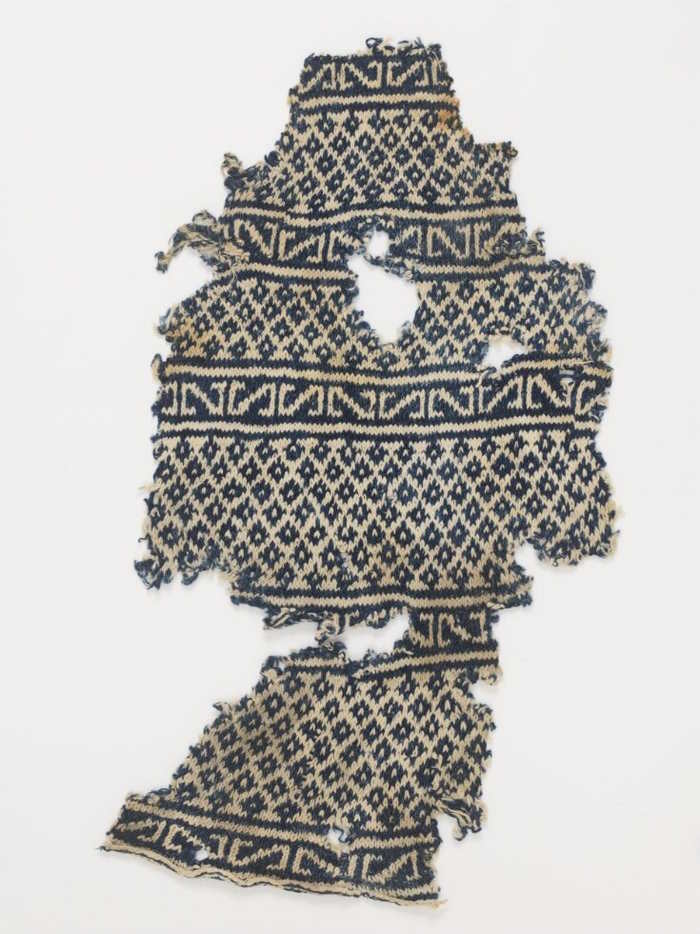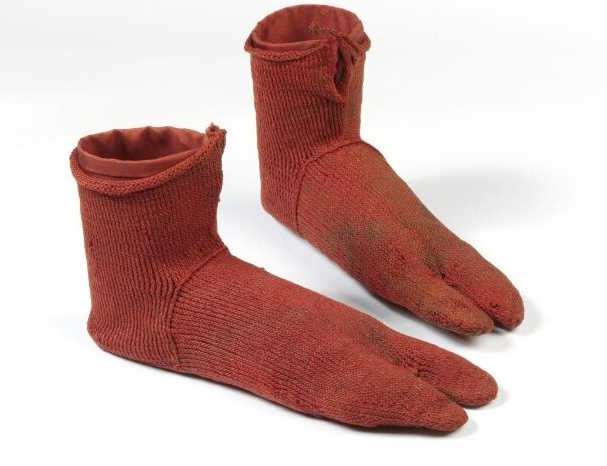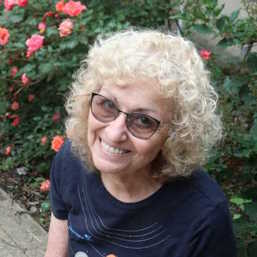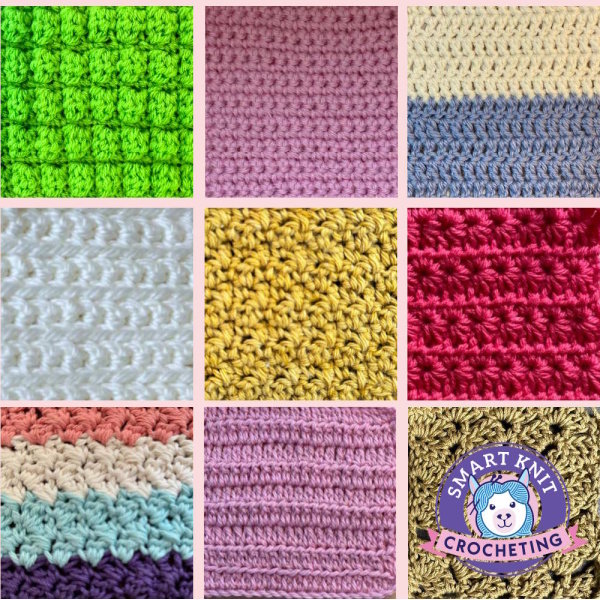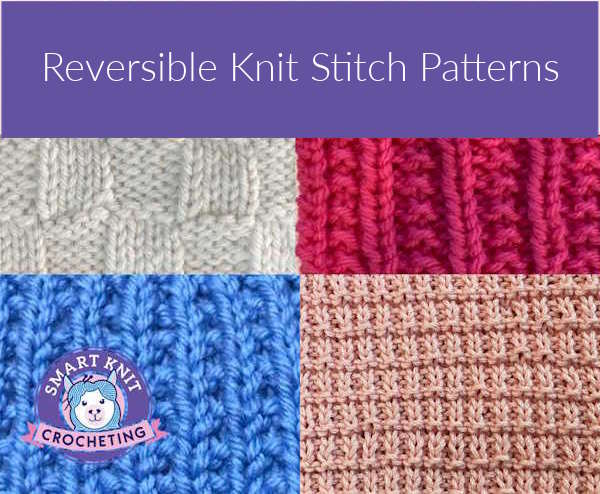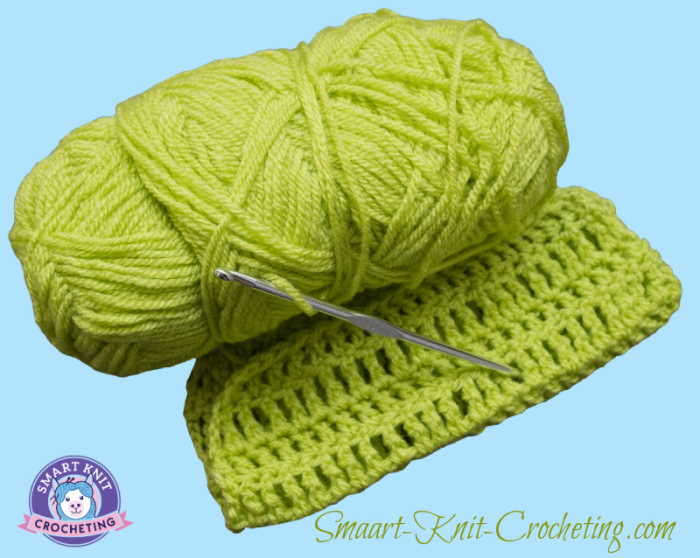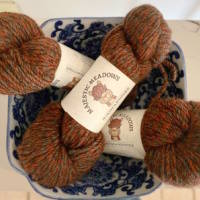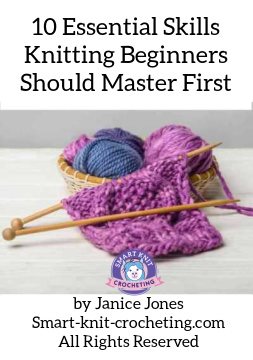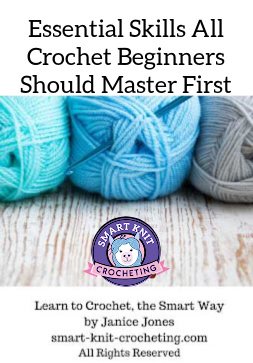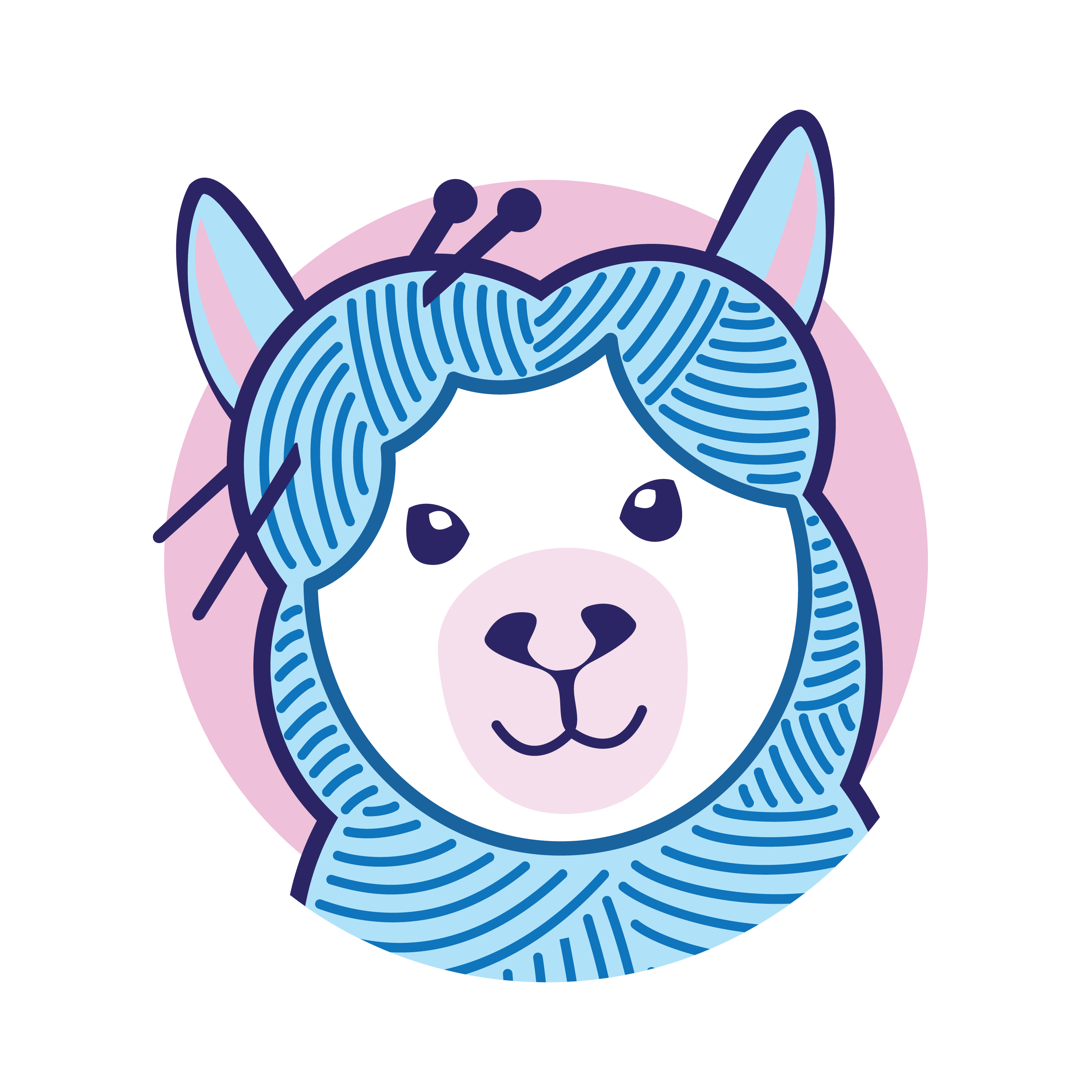- Home
- History of Knitting
History of Knitting: From Medieval Times to Modern-Day
History of Knitting by Janice Jones |Last Updated 11-25-2023
Knitting is an ancient craft that has been around for centuries. Throughout history, knitting has played an essential role in people's lives worldwide.
From keeping soldiers warm on the battlefield to providing a source of income for families, knitting has been an essential skill from ancient times for many people.
In this article, I will deeply dive into the rich, colorful, and long history of knitting, exploring its origins, role in medieval times, and evolution over the centuries.
The word knit comes from knot, which is thought to have originated from the Dutch word knutten and from the Old English word cnyttan, which means to tie with a knot. Likely, it was first invented to produce clothing and items used by people to protect themselves from the elements. It uses a process of creating loops of threads that interlock row by row.
But, the actual word "Knit" first appeared in the Oxford Unabridged English Dictionary in the 15th century.
The Origins of Knitting - When Was Knitting Invented?
The exact origins of knitting are unknown, but it is believed to have originated in the Middle East or ancient Egypt around 1000 AD. Historian Richard Rutt, in his book, "A History of Hand Knitting," suggested that knitting originated in Egypt between 500 and 1200 A.D.
Some historians believe that knitting may have been invented by the nomads who roamed the area, as they needed a way to create warm clothing that was easy to carry on their travels.
Rutt reported on some archaeological finds that included knit fragments in Eastern Syria. This first knitted item was plain wool, and each fragment was believed to be a part of a foot sock, though we do not know the exact date this knitted fragment was made.
Ancient knitters used natural fibers such as cotton, wool, or silk, and these fibers decompose rapidly, so tracing the history of early kitting is difficult.
Weaving and spinning predate knitting, but a former type of knitting. But Nalbinding, Nålebinding, which looks like knitting, could be the origin of our modern-day knitting. It is a knotless fabric creation technique that requires one needle to knot and merge together, whereas knitting uses two needles and yarn to make loops.
Nailbinding was done in 4th century Egypt by the Coptic Christians to create a pair of Coptic socks – a roughly shaped garment to fit the centuryr thongs or sandals.
It was also used by the Scandinavians who lived in cold areas to produce extra-warm hats and gloves in the latter 1st century.
Compared to knitting, nalbinding requires more time and talent. However, this fabric creates a smoother, denser, and more durable material than knitting.
The Role of Knitting in Medieval Times
Knitting was introduced into Spain by the Arabs through Mediterranean trade routes and was used by the Catholic church to create their liturgical garments and accessories.
The earliest known knitted fabric in Europe was made by Muslim knitters employed by Spanish Christian royal families.
These Muslim knitters were prized for their high skill level, and some items were found in modern times in tombs, including knitted cushion covers and gloves.
Several paintings were made in the 1350s that show the mother of Jesus, the Virgin Mary knitting.
It was called The Knitting Madonnas and is not historically accurate; it does reveal three things to us today. First, knitting did exist in the 13th century, and second, it shows the rise of knitting as an activity for women. Finally, it shows the use of double pointed needles needed to knit in the round.
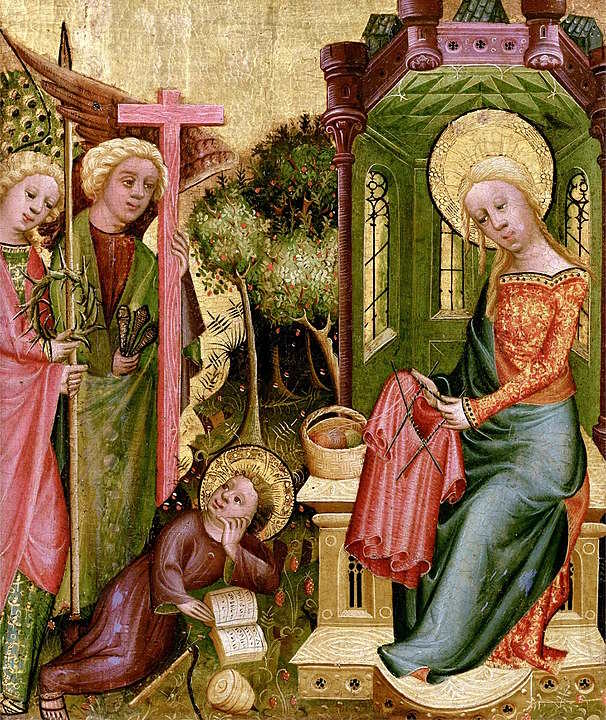 Madonna Knitting, by Bertram of Minden 1400-1410 via Wikipedia
Madonna Knitting, by Bertram of Minden 1400-1410 via WikipediaKnitting was also used in armor, which knights and soldiers wore. Knitted armor was lightweight and flexible, making it ideal for combat. It was also more affordable than traditional metal armor, making it accessible to more people.
The 16th Century: Knitting in the England, Europe, and America
In the 16th century England, the purl stitch was invented and used to knit stockings, a type of garment popularized as a powerful fashion trend for men. The first British king to wear stockings was King Henry VIII.
During this fashion trend, Queen Elizabeth I, the daughter of King Henry VIII, encouraged the formation of knitting guilds in England. She also started wearing knit silk stockings and gowns with knitted sleeves during her reign.
From the Middle East, knitting spread to Europe, the United Kingdom, and eventually America as colonists arrived there.
New Styles of Knitting Evolved
Different types of knitting began in different parts of the world. Two-color knitting or fair isle knitting originated on a group of islands north of Britain. The true history of fair isle is unclear. One theory states that the first example of this type of knitting began around 1850. The Prince of Wales wore a fair isle sweater in 1921. Another theory suggests that fair isle was inspired in 1588 when a Spanish ship was wrecked off Fair Isle. The ship wrecked crew taught the native knitters how to create this color design.
German knitting also has a long history. Four or five needles were often used by German knitters.
About this same time, separate knitting styles also appeared, including the use of cables in seaman's sweaters called Gansey.
The invention of mechanical knitting machine in the 16th century revolutionized the industry, making it possible to produce knitted items on a large scale. English Clergyman William Lee invented the mechanical knitting machine in the year 1589.
Knitting also became more accessible to people of all classes, as knitting patterns and instructions were published in books and magazines.
Knitting in the 18th and 19th Centuries
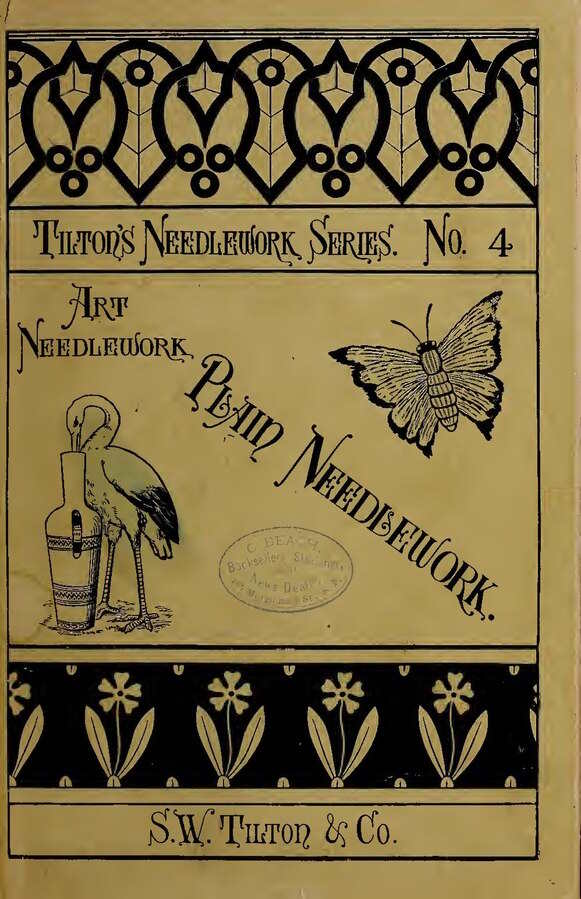 By the 1800s, books were published with patterns and instructions for creating knitted objects. The instructions written then would be very difficult for modern knitters to follow.
By the 1800s, books were published with patterns and instructions for creating knitted objects. The instructions written then would be very difficult for modern knitters to follow.During the 18th and 19th centuries, knitting continued to be an important part of everyday life. Women would knit clothing for their families, and knitting guilds continued to thrive.
During the American Revolutionary War, the young and old gathered together to sew and knit. The colonists knit their own garments as a way to boycott British goods. This was their way to show independence from the British.
Martha Washington was also a dedicated knitter. She encouraged the wives of the high-ranking officials in the colonial army to sew and mend garments such as socks and uniforms for the troops.
However, the rise of the Industrial Revolution led to the decline of the hand-knitting industry, as knitting machines were able to produce knitted items more efficiently.
Despite this, hand knitting remained a popular hobby among women, and many knitting societies were established across Europe and America.
Knitting During the time of the World Wars
Knitting was used during the First World War, as soldiers needed warm clothing and socks to survive the harsh conditions in the trenches. Socks wore out quickly and knitting was also used during wartime, as soldiers needed warm clothing and blankets to survive the harsh conditions on the battlefield.
Many women volunteered to knit for the war effort, and knitting became a symbol of patriotism and support for the troops.
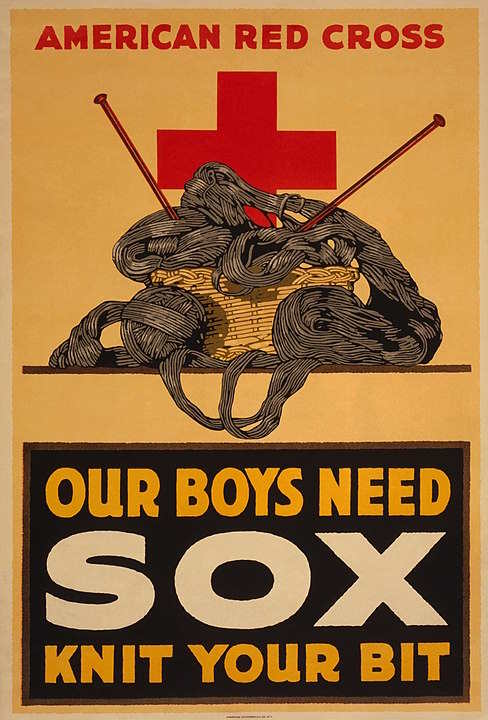 N.Y. : American Lithographic Co., [between 1914 and 1918], Public domain, via Wikimedia Commons
N.Y. : American Lithographic Co., [between 1914 and 1918], Public domain, via Wikimedia CommonsThe Rise of Knitting as a Hobby in the 20th century
In the 20th century, knitting experienced a resurgence in popularity. During the Second World War, knitting once again became a symbol of patriotism and support for the troops. Women would knit socks, gloves, and other items to send to soldiers overseas.
After the Great War, knitting continued to be a popular hobby among women. Knitting patterns and instructions were published in magazines and books, and knitting societies continued to thrive.
During the 1920's, sweaters and pullovers were very popular and often associated with sports such as golf, tennis, and cricket. Coco Chanel also made use of this trend in clothing and patterns.
During the great depression, knitting continued its journey, yet it changed due to economic hardship. Since it was less expensive to make your own garments, those that could preferred producing their own rather than buying ready-made products.
Materials were recycled but still created, for the most part, with natural fibers such as wool, cotton, and silk. Hand-knitters had the skills needed to repair existing garments, especially socks, and underwear because many folks didn't have the money to replace these items.
Even women who considered themselves hobby knitters made extra money knitting for others.
With the rise of World War II, Unravel and reuse were the way many wartime knitters created items for soldiers in the field. Wool was not easy to obtain, but socks and gloves were needed. Knitting on the homefront also gave people the sense that they were contributing to the war effort.
End of the 20th Century
Knitting remained very popular through the 50s, 60s, and 70s and then began to decline in the 80s. Cheaper ways to obtain manufactured clothing created some of the decline.
At this point in history, making things yourself was no longer cheaper, as the cost of manufactured fashion went down while the cost of patterns, yarn, and tools remained steady.
Knitting in Modern Times
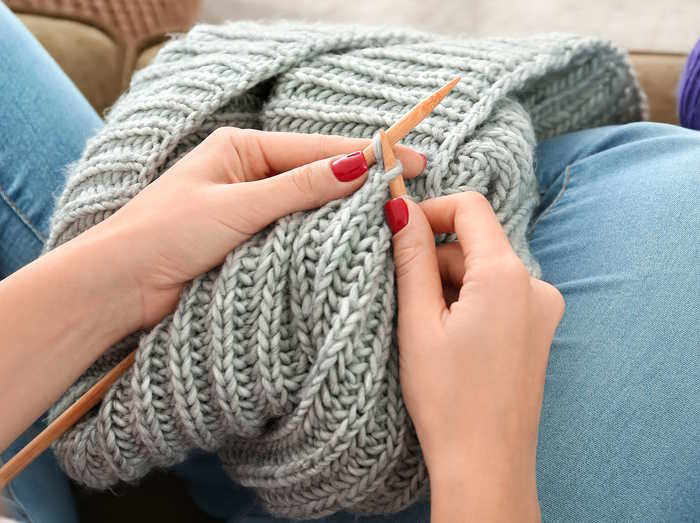 History of Knitting in Modern Times
History of Knitting in Modern TimesIn recent years, knitting has experienced another resurgence in popularity, with many young people taking up the craft as a way to relax and unwind. Today, knitting continues to be a popular hobby among people of all ages. The rise of the internet has made it easier than ever to access knitting patterns and instructions, and social media has allowed knitters from all over the world to knit and share their work.
Knitting is also being used in a variety of new and innovative ways. Knitted art installations and sculptures have become popular in recent years, and knitting is being used to create everything from clothing to furniture to household items and toys.
Famous Knitters Throughout History
Throughout history, many famous people have been known to enjoy knitting. Queen Victoria was a knitter and would often knit items for her family and friends. The writer Beatrix Potter was also a talented knitter and would often knit her own patterns.
In more recent times, celebrities such as Madonna and Julia Roberts have been known to enjoy knitting. The artist Kaffe Fassett is also famous for his collection of intricate knitted designs.
Conclusion - Why the History of Knitting Matters
The history of knitting has a long and fascinating evolution. From its origins in the Middle East to its popularity in medieval times and its resurgence in modern times, knitting has played an important role in the lives of people all over the world.
Understanding the history of knitting allows us to appreciate the skill and craftsmanship that goes into creating knitted items. It also allows us to connect with our ancestors and the generations of women who have passed down this valuable skill from one generation to the next.
So if you have ever picked up a pair of knitting needles, take a moment to appreciate the rich history behind this ancient craft. And if you haven't tried knitting yet, why not give it a go? You never know what creative possibilities await you!
So Grab a pair of needles and add to the history of hand knitting with a special pair of socks, knit shawl, or even a Fair Isle sweater.
History of Knitting: Pin for Future Reference
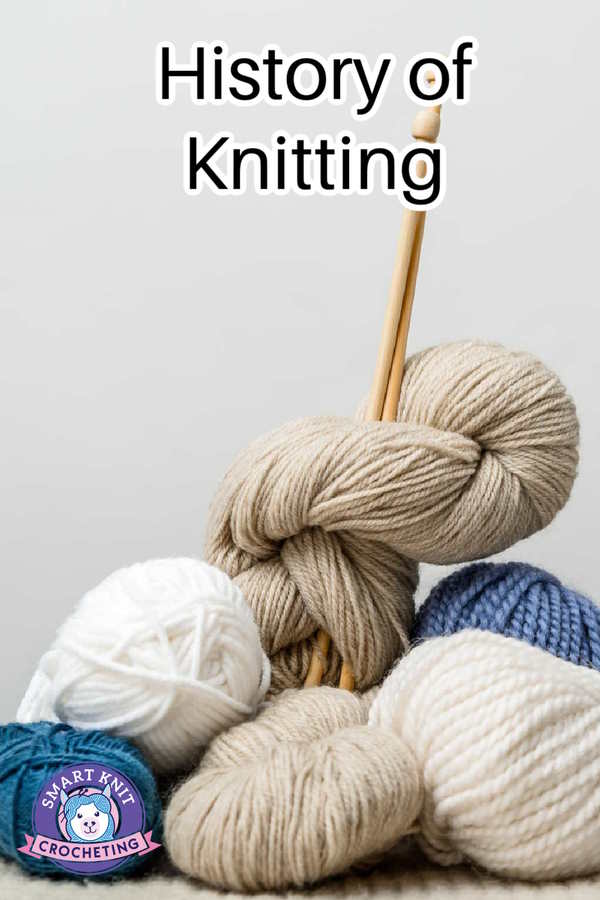
References Used for History of Knitting
https://www.makersmercantile.com/history-of-knitting-a-resource-guide.htm
https://en.wikipedia.org/wiki/History_of_knitting
